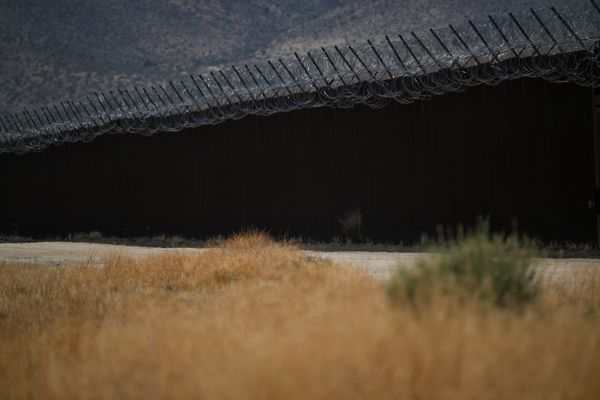
Located just 40 minutes from Lisbon, Cascais provides the perfect antidote to the capital’s frenetic energy and the ideal base for exploring the region’s gems. The area is renowned for its many charming beaches scattered along the Estoril coastline and the array of water sports on offer.
Cascais’ desirability as a holiday resort dates back to 1870, when King Luis made the citadel his official royal summer residence. The town’s popularity continues to thrive, attracting Portugal’s elite, as well as savvy global travellers. Prime minister António Costa calls this place his non-official home and can often be seen starting the day with an early morning swim.
What to do
Go for a hike
Walk Hike Portugal has created several itineraries and off-piste trails showcasing the rural beauty and rugged landscapes within the Sintra-Cascais National Park.
The exhilarating “Route of Fishermen” follows the tracks of yesteryear, which were taken to transport the mornings’ trawl to land. This trek also passes by Cape Roca, the most western point of Europe, culminating with a dinner by sunset at the gorgeously dramatic Adraga beach. From €65pp (£58).
Go beach hopping
The fantastic choice of beaches on the Portuguese Riviera provides a variety of water sports including kayaking, paragliding and the increasingly popular paddle boarding. Keen surfers head to Praia do Norte in Nazaré, site of the largest record-breaking waves ever surfed. Other popular beaches to hang out at are Carcavelos and the stunning Praia do Guincho.

Check out the art
Cascais packs a lot of culture into a relatively small area. The most prudent way to see it is by purchasing a Museum Quarter pass for €13 (£12), valid for 24 hours.
Entry includes the Paula Rego House of Stories, housing a visceral collection, much of it chronicling her time with husband and fellow artist, Victor Willing, whose work is also on display. The museum’s popularity with the locals, drawn to the distinctive red concrete exterior and two pyramid towers, confirms architect Eduardo de Moura adhered to Rego’s brief that the design should be “fun, unpretentious and alive” with “lots of mischief”.
Scale the stairs of the Lighthouse Museum, also included with the pass, for panoramic views of the city and the sea.

Meanwhile, Casa Santa Maria, built in 1902, houses some fine examples of traditional blue and white tiles, oil painted ceilings and tiled narrative scenes.
Museums are open daily apart from Mondays.
Play a round of golf
Some of Portugal’s finest golf courses are to be found here. The Golf Passport, allows entry into six courses, including host of the 2010 Portuguese Open, the 27-hole Penha Longa Resort. It’s attached to a luxury hotel for those who prefer to stay and play. Passport prices start at €168 (£150) for three rounds in low season.

Where to stay
Villa Cascais is a charming boutique hotel in the historical centre, kissing distance from the Atlantic Ocean. The blue and green hues of the stylish bedrooms evoke the seascape, while the tiled bar devotes several walls to an exceptional selection of regional wines, available in tasting measures to maximise sampling opportunities. Doubles from €120 (£108), B&B.
Pousada de Cascais is located within the 16th century fortress walls of the Citadel. Many of the 126 bedrooms have been uniquely curated by a variety of international artists including Heberth Sobral, who cleverly uses Playmobil toys to create an azulejo tiled wall in one of the most delightful rooms. Doubles from €165 (£149), B&B.

Book an ocean view room at Grande Real Villa Itália Hotel & Spa, a luxury hotel where the last King of Italy, Umberto II, resided until his death following exile from his homeland. Doubles from €108 (£97), B&B.
The family run Pergola House is an endearing converted 19th century mansion with an enchanting garden. Adults only, this B&B brims with character. Doubles from €88 (£79), B&B.
Where to eat
It takes discipline not to fill up entirely on the Queijo de Azeitao, a deliciously stinky local sheep’s cheese, at Panorama Guincho. It would, however, be a travesty not to leave ample room for the top notch seafood. The star dish is the sublime whole fish cooked in a bread crust.
It takes just one lick of Santini’s ambrosial ice cream to confirm its reputation as the best in the country. Regularly inventing new flavours, such as the luscious ricotta and fig, assures the continued popularity of Cascais’ two branches.

For modern tapas with the wow factor, coupled with excellent wine pairings, book a table at Arola, where chef Bruno Oliveira is flourishing under mentor Sergi Arola.
Deservedly holding a Michelin star since 2001, Fortaleza do Guincho caters for all the senses. The breath-taking views of the beach below perfectly compliment the innovative dishes, served with a ceremonial swagger.
Notorious for its fishing harbour, seafood excels in Cascais. At Maria Pia customers reverse roles with the fish as they sit inside the aquarium like restaurant overlooking the water. And Mar du inferno – perched dramatically by the raging sea at Boca de inferno – “the mouth of hell’. This doesn’t remotely put diners off; the place is packed out with locals chomping their way through the extensive menu.
Where to drink
Step back in time to a world of espionage and the regular haunt of English and German spies during the Second World War in Bar Estoril at Hotel Palacio. Ian Fleming was such a fan that scenes from On Her Majesty’s Secret Service were filmed around the hotel. And yes, they make a stellar Martini.
Visit Bar Farol for a sunset cocktail and pull up a chair to the best show in town, making the most of Farol Hotel’s spectacular waterfront location.

HÍFEN is a cool, buzzy joint, with a DJ starting from 11pm most nights.
And for a coffee fix (and fresh pastries), Bijou doesn’t disappoint. Sit at a table outside and watch the world go by in the bustling square.
Where to shop
Portuguese wine is much underrated, so you’d be wise to save space in your luggage to bring back a bottle or two. Book in for a visit to buy direct from the source at Casal sa Maria and learn about the terroir, and the fascinating tale of how this idyllic vineyard came to fruition.

Casa da Guia houses an eclectic mix of shops while Cais 16 Craft Gallery sells delectable edibles and quality local products.
Architectural highlight
Sintra is known for the leading Unesco World Heritage Site, the Palacio Nacional da Pena, a candy-coloured fairy tale palace which dominates the verdant landscape. King Ferdinand II adapted a Hieronymite monastery in the 19th century, turning it into one of the finest examples of romanticism in architecture. Open daily 9.30am-7pm; entry €13.30 (£11.95).

Nuts and bolts
What currency do they use?
Euros.
What language do they speak?
Portuguese.
Should I tip?
Although it’s not expected, 5 to 10 per cent is the norm for tourists rewarding good service.
What’s the time difference?
There is no time difference between Cascais and the UK.
What’s the average flight time from the UK?
TAP Air Portugal flies direct to Lisbon from London City, Heathrow, Gatwick and Manchester, up to 12 times a day in two hours and 40 minutes. Prices from £84 return.
Public transport
Cascais is compact enough to walk around on foot. Alternatively, hire a bike through the Mobi Cascais bike sharing scheme for just €3.90 (£.350) a day.
Best view
Head somewhat off the beaten track to the Sanctuary of Peninha and its crumbling hermitage ruins. Although admission to the chapel is rare, the glorious view from one of Sintra’s highest peaks is available 24/7.
Insider tip
For the ultimate vantage point of Cascais and its beaches, hire a boat via Skipper Portugal. Four hours at sea for up to 10 passengers on Villa Cascais’ sturdy inflatable costs €450 (£404).







